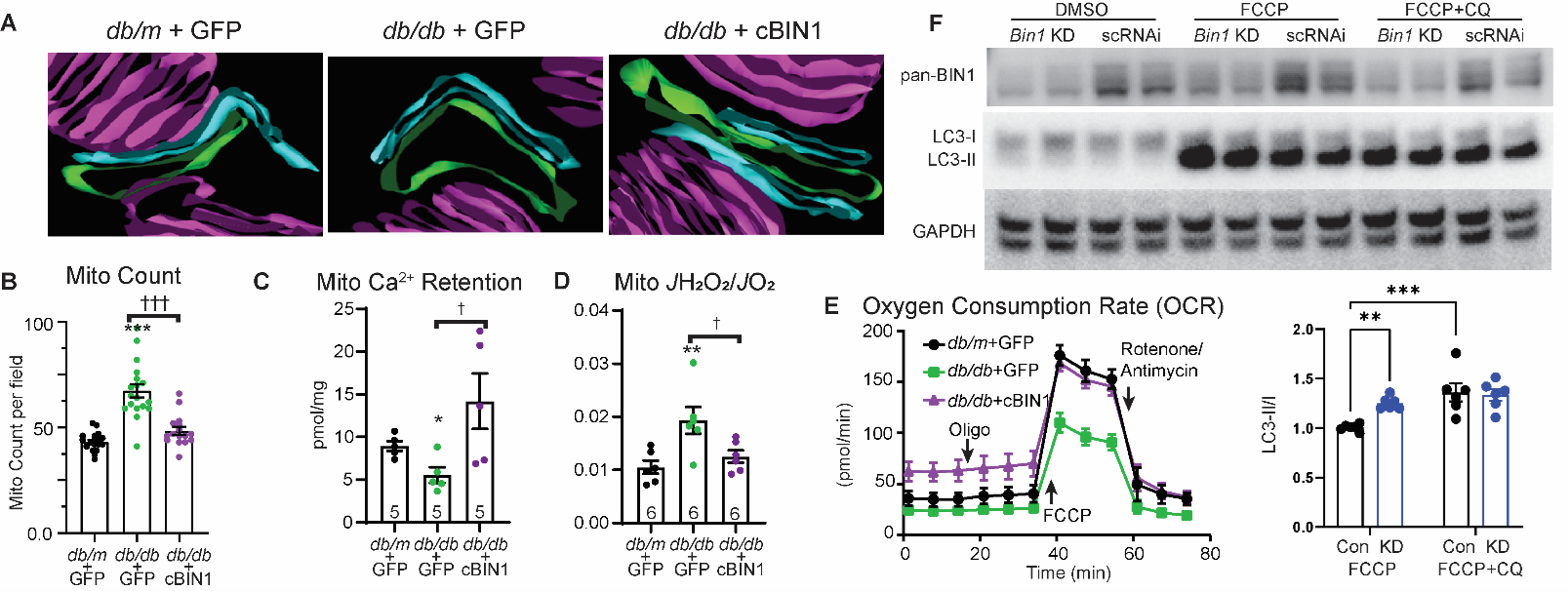Final ID: Tu081
T-tubule microdomains promote protective mitophagy in failing hearts
Abstract Body: Heart failure (HF) with preserved ejection fraction (HFpEF) represents about 50% of all HF incidence, yet with limited therapeutic options. Although poorly understood, a key pathophysiology of HFpEF includes mitochondrial dysfunction and increased oxidative stress. We recently identified that abnormal remodeling of the cardiomyocyte t-tubule microdomains organized by the scaffolding protein cardiac bridging integrator 1 (cBIN1) contributes to HFpEF progression in db/db mice with type 2 diabetes, which can be rescued by cBIN1 gene therapy. In db/db mice, cBIN1 gene therapy (2x1012 vg/kg) rescues HFpEF by normalizing t-tubule microdomains. With transmission electron microscopy imaging, here we report that t-tubule cBIN1-microdomains are in close proximity to mitochondria and can correct abnormal mitochondrial accumulation in db/db cardiomyocytes (Figure 1A-B). Oroboros and seahorse analysis indicates that reduced mitochondrial calcium retention, elevated oxidative stress, and impaired oxygen consumption in diabetic cardiomyocytes can be normalized by cBIN1 therapy (Figure 1C-E). Furthermore, proteomics analysis indicates accumulation of mitochondrial proteins in db/db cardiomyocytes can be reversed by the therapy. cBIN1-normalized mitochondrial number, proteomics, and function in db/db cardiomyocytes are associated with activation of LC3 but not changes in PGC1a, indicating increased mitophagy by the therapy. Mechanistic exploration in rat myoblast H9C2 cells indicates that FCCP stress induces mitophagy as evidenced by elevated LC3II/I ratio, which is further accumulated with autophagic flux blockade with chloroquine. Knockdown of BIN1 results in further accumulation of LC3II/I in FCCP-stressed cells (Figure 1F with quantification in the bar graph below), which is abolished by chloroquine. These data indicate that cBIN1 promotes protective mitophagy in diabetic failing hearts, suggesting its therapeutic potential for HFpEF in general.
More abstracts on this topic:
Abrupt cardiac rupture of the patient with ATTR amyloidosis
Tagata Kento, Yutaro Nomoto, Tao Koji, Kataoka Tetsuro, Ohishi Mitsuru
Autophagy-related Protein 7’s Role in the Activation of Mitophagy in the HeartAbdullah Chowdhury S., Aishwarya Richa, Remex Naznin Sultana, Islam Tamjid, Dhar Proma, Orr Wayne, Sadoshima Junichi, Bhuiyan Shenuarin

